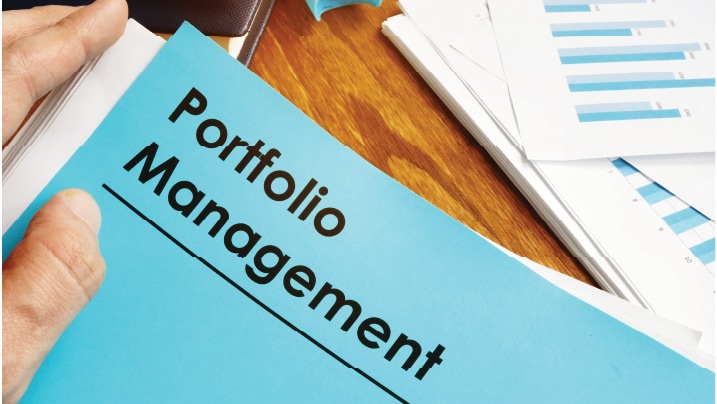CKYC Registry
-
Customer Service Contact us Service request Locate a branch
Find all the help you need
Scan the QR, get our app, and find help on your fingertips

Help CenterSupport topics, Contact us, FAQs and more
-
Login
Are you ready for an upgrade?
Login to the new experience with best features and services
-
Login
Are you ready for an upgrade?
Login to the new experience with best features and services
- Accounts
-
Deposits
IDFC FIRST Bank Deposits
View all Deposits -
Loans
IDFC FIRST Bank Loans
View all Loans - Wealth & Insure
-
Payments
IDFC FIRST Bank Payments
View all Payments -
Cards
IDFC FIRST Bank Cards
View all Cards - Blogs
- Corporate Account
-
Cash Management Services
IDFC FIRST Bank Cash Management Services
View all Cash Management Services - Supply Chain Finance
-
Corporate Lending
IDFC FIRST Bank Lending
View all -
Treasury
IDFC FIRST Bank Treasury
See more details - NBFC Financing
Support topics, Contact us, FAQs and more
- IDFC FIRST Bank Accounts
-
Savings Account
-
Corporate Salary
Account -
Senior Citizens
Savings Account -
First Power
Account -
Current Account
-
NRI Savings
Account -
TASC Institutional
Account -
Savings Account
Interest Calculator
- IDFC FIRST Bank Deposits
-
Fixed Deposit
-
Recurring Deposit
-
NRI Fixed Deposit
-
Safe Deposit Locker
-
FD Calculator
-
RD Calculator
- IDFC FIRST Bank Loans
-
Personal Loan
-
Consumer Durable
Loan -
Home Loan
-
Business Loan
-
Professional Loan
-
Education Loan
-
New Car Loan
-
Pre-owned Car Loan
-
Two Wheeler Loan
-
Pre-owned Two
Wheeler Loan -
Commercial Vehicle
Loan -
Gold Loan
-
Loan Against Property
-
Loan Against Securities
-
Easy Buy EMI card
-
Personal Loan
EMI Calculator -
Education Loan
EMI Calculator -
Home Loan
EMI Calculator -
EMI Calculator
-
Personal Loan Eligibility Calculator
- IDFC FIRST Bank Wealth & Insure
-
FIRST Select
-
FIRST Wealth
-
FIRST Private
-
Mutual Funds
-
Sovereign Gold Bond
-
Demat Account
-
Term Insurance
-
Life Insurance
-
Health Insurance
-
General Insurance
-
Bonds
-
Loan Against
Securities -
Portfolio Management
Service
- IDFC FIRST Bank Payments
-
FASTag
-
Credit Card
Bill Payments -
UPI
-
Funds Transfer
-
Forex Services
-
Pay Loan EMI
- IDFC FIRST Bank Cards
-
Ashva :
Metal Credit Card -
Mayura :
Metal Credit Card -
FIRST Millennia
Credit Card -
FIRST Classic
Credit Card -
FIRST Select
Credit Card -
FIRST Wealth
Credit Card -
FIRST WOW!
Credit Card -
Deals
-
Debit Cards
-
Co-branded Cards
-
Credit Card
EMI Calculator -
FIRST Corporate
Credit Card -
FIRST Purchase
Credit Card -
FIRST Business
Credit Card
- Premium Metal Credit Cards
-
AshvaLifestyle1% Forex₹2,999
-
MayuraLifestyleZero Forex₹5,999
-
FIRST PrivateInvite Only
- Best for travellers
-
MayuraZero ForexMetal₹5,999
-
Ashva1% ForexMetal₹2,999
-
FIRST WOW!Zero ForexTravelLifetime Free
-
FIRST SWYPTravel OffersEMI₹499
-
FIRST Select1.99% ForexLifestyleLifetime Free
-
FIRST Wealth1.5% ForexLifestyleLifetime Free
-
Club VistaraTravelLifestyle₹4,999
-
IndiGo IDFC FIRST Dual Credit CardTravelLifestyle₹4,999
- Max benefits, Free for life
-
FIRST Classic10X RewardsShoppingNever Expiring Rewards
-
FIRST Millennia10X RewardsShoppingNever Expiring Rewards
-
FIRST Select10X RewardsLifestyle1.99% Forex
-
FIRST Wealth10X RewardsLifestyle1.5% Forex
-
FIRST WOW!RewardsTravelZero Forex
-
LIC ClassicRewardsInsuranceShopping
-
LIC SelectRewardsInsuranceShopping
- Reward Multipliers
-
AshvaLifestyleMetal₹2,999
-
MayuraLifestyleZero Forex₹5,999
-
FIRST ClassicNever Expiring RewardsShoppingLifetime Free
-
FIRST MillenniaNever Expiring RewardsShoppingLifetime Free
-
FIRST SelectNever Expiring RewardsLifestyleLifetime Free
-
FIRST WealthNever Expiring RewardsLifestyleLifetime Free
- Rewards & Credit on UPI
-
FIRST Power+FuelUPI₹499
-
FIRST PowerFuelUPI₹199
-
FIRST EA₹NVirtual1% Cashback₹499
-
FIRST DigitalVirtualUPI₹199
-
IndiGo IDFC FIRST Dual Credit CardUPITravelDual cards
- Fuel and Savings
-
FIRST PowerRewardsUPI₹199
-
FIRST Power+RewardsUPI₹499
-
LIC ClassicRewardsInsuranceShopping
-
LIC SelectRewardsInsuranceShopping
- Express and Flaunt
-
AshvaMetal1% Forex₹2,999
-
MayuraMetalZero Forex₹5,999
-
FIRST SWYPEMIOfferMAX₹499
-
FIRST MillenniaRewardsShoppingLifetime Free
- FD Backed rewarding Credit Cards for all
-
FIRST EA₹NVirtualCashback₹499
-
FIRST WOW!Zero ForexTravelLifetime Free
-
CreditPro Balance TransferTransfer & SaveReduce InterestPay Smartly
- IDFC FIRST Bank NRI Forex Solutions
-
Send money to India-Wire transfer
-
Send money to India-Digitally
-
Send money abroad
-
Max Returns FD (INR)
- IDFC FIRST Bank MSME Accounts
-
Platinum Current
Account -
Gold
Current Account -
Silver Plus
Current Account -
Merchant Multiplier
Account -
Agri Multiplier
Account -
TASC Institutional
Account -
Dynamic Current
Account -
World business
Account -
First Startup
Current Account
- IDFC FIRST Bank Business Loans
-
Business Loan
-
Professional Loan
-
Loan Against Property
-
Business Loan for Women
-
Working Capital Loan
-
Construction Equipment Loan
-
Machinery Loan
-
Healthcare Equipment Loan
- IDFC FIRST Bank Business Solutions
-
Payment Solutions
-
Tax Payments
-
Doorstep Banking
-
Point of Sale (POS)
-
Escrow Accounts
-
NACH
-
Payment Gateway
-
UPI
-
Virtual Accounts
-
As per amendment in the Income Tax Rules, PAN or Aadhaar are to be mandatorily quoted for cash deposit or withdrawal aggregating to Rupees twenty lakhs or more in a FY. Please update your PAN or Aadhaar. Kindly reach out to the Bank’s contact center on 1800 10 888 or visit the nearest IDFC FIRST Bank branch for further queries.
-
-
Most Searched
Sorry!
We couldn’t find ‘’ in our website
Here is what you can do :
- Try checking the spelling and search
- Search from below suggestions instead
- Widen your search & try a more generic keyword
Suggested
Get a Credit Card
Enjoy Zero Charges on All Commonly Used Savings Account Services
Open Account Now
Personal finance: Portfolio management and everything it entails
Summary: Portfolio management involves two parts: First, building it with asset allocation, risk management, and diversification. Second, managing it with performance evaluation and regular rebalancing. Let's find out more.
You must have heard the proverb, "Don't put all your eggs in one basket". While the proverb applies to many aspects of life, it is equally relevant in investment decisions.
If you put all your money in a single asset class or a financial product, and that asset class/financial product falls sharply, you will incur huge losses, and you will have to compromise on your financial goals. Therefore, you should always have an investment portfolio and manage it until you achieve your financial goals.
You will learn what portfolio management is and some related concepts in this article.
Also read: Best investment options in India
What is portfolio management?
The objective of portfolio management is to allocate money to a variety of asset classes and manage them to reach an investor's long-term financial goals. The asset classes and the money allocated to each are designed to match the investor's risk profile, and the portfolio earns optimal risk-adjusted returns.
Portfolio management is composed of two words:
1) Portfolio: It involves identifying various asset classes to build a diversified investment portfolio that matches the investor's risk profile.
2) Management: A portfolio of investments must be reviewed regularly and rebalanced when necessary until the investor's financial goals are met.
Now that you understand what is portfolio management, here are some related concepts:
Asset allocation
Asset allocation is the process of investing money in various asset classes. Each one of them has a specific role to play in your investment portfolio as follows:
a) Domestic equity: It can give inflation-beating high returns and generate wealth for you in the long run. It carries a high risk and is suitable for investors with an aggressive risk profile. Equities are an excellent financial product for investing towards long term financial goals such as building a fund for a child's higher education or own retirement.
b) International equity: It hedges country-specific risk. It also provides the benefit of Indian (INR) currency depreciation against the US Dollar, which enhances your overall returns. Like domestic equities, it has the potential to generate high returns. Due to the high risk involved, it is suitable for investors with an aggressive risk profile.
READ MORE
c) Fixed income: It stabilises the overall investment portfolio when equities are volatile or falling. It provides regular interest income. It carries relatively lower risk than equities and is suitable for investors with a low to moderate risk profile.
d) Gold: It is considered a hedge against inflation. It is also considered a haven during times of uncertainty, such as a pandemic, war, political instability, etc.
Different asset classes outperform each other. You cannot predict which asset class will give the best returns next year and in the years ahead. Hence, your investment portfolio should have a diversified asset allocation.
Risk management and diversification
In the earlier section, you understood why you should follow asset allocation. When building a diversified investment portfolio, you should consider your risk profile to decide the percentage allocation to each asset class.
a) Aggressive risk profile: If you have an aggressive risk profile, you may allocate a higher percentage of your overall investment portfolio to equities and a lower percentage to fixed income. You should invest in equity mutual funds rather than buying shares directly from the stock market. Within equities, you may further divide the allocation among domestic and international equities. Equity mutual funds can also be selected based on active and passive mutual funds.
b) Moderate risk profile: If you have a moderate risk profile, you may split the allocation between equities and fixed income equally, with some allocation to gold. If you don't wish to invest separately in equities and fixed income, consider investing in hybrid mutual funds. They provide you with a combination of equity and fixed income in a single mutual fund scheme.
c) Conservative risk profile: If your risk appetite is low, you may allocate a higher percentage of your investment portfolio to fixed income and a lower percentage to equities. You may consider investing in conservative hybrid funds that combine fixed income (75 to 90%) and equities (10 to 25%).
Apart from risk appetite, an individual's risk profile may be influenced by other factors, such as,
a) Age: As age increases, risk appetite diminishes.
b) Financial liabilities: A higher-value loan, such as a home loan, may reduce your risk appetite for investments that are high-risk.
c) Financial responsibilities: When you get married and have children, the additional financial responsibilities may reduce the risk appetite for high-risk investments.
d) Time left to achieve financial goals: As the time to achieve the financial goal comes closer, you may prefer to shift the investment from riskier investment options to safer ones.
Portfolio performance evaluation
Based on the above discussion, you have formulated an investment portfolio with appropriate asset allocation and diversification that suits your risk profile. Now you need to evaluate the investment portfolio's performance.
a) You should review the investment portfolio performance once every six months to 1 year.
b) Compare the returns of each asset class and the overall investment portfolio returns with the expected returns. If any financial products are not performing as expected, evaluate the reasons for the underperformance.
c) Take corrective action, such as replacing the underperforming financial product with an appropriate replacement.
d) If some new asset class or financial product has been introduced, consider including it in your investment portfolio if it fits the inclusion criteria.
Rebalancing
While evaluating investment portfolio performance, you may notice that the weightage of a particular asset class has increased due to its outperformance compared to other asset classes. In such cases, you need to rebalance your portfolio.
For example, you have an asset allocation of equity and debt in a 75:25 ratio. Of every Rs. 100 invested, Rs. 75 goes to equity and the remaining Rs. 25 to debt.
Let us assume that the equity investment has appreciated by 20% and the debt investment has appreciated by 5% in the last year. In this case, the equity investment is worth Rs. 90 and the debt investment is worth Rs. 26.25, making the overall investment portfolio worth Rs. 116.25. The equity and debt asset allocation ratio has changed to 77:23.
To rebalance, you must sell some equity and invest the proceeds in debt, so that the equity and debt asset allocations return to 75:25.
You can invest in hybrid or multi-asset allocation mutual funds to avoid the challenges of portfolio rebalancing.
Investing in a hybrid fund exposes you to both equity and debt, while investing in a multi-asset class fund exposes you to at least three asset classes with a minimum allocation of 10% to each.
An expert fund manager rebalances portfolios regularly on behalf of investors in hybrid and multi-asset allocation schemes.
Also read: Invest in Fixed Deposits for these five reasons
Active vs passive portfolio management
There are two portfolio management styles- active and passive.
1) Active portfolio management
It involves actively buying and selling securities (equity, debt, gold, etc.) to beat benchmark indices or the broader markets. A hands-on approach is used to maximize returns. Undervalued securities are identified using quantitative or qualitative methods and then sold at a profit.
2) Passive portfolio management
It involves buying a fixed set of securities (equity, debt, etc.) and holding them long-term. The objective is to earn benchmark returns. It is done using index funds and exchange traded funds (ETFs) on various equity and debt indices.
IDFC FIRST Bank allows you to invest in various mutual funds. You can choose from equity, debt, hybrid, multi-asset class funds, etc.
You can invest in active mutual funds if you prefer active portfolio management. IDFC FIRST Bank offers various index funds if you prefer passive portfolio management. The bank provides personalised investment solutions for your financial goals.
To sum up
Portfolio management is the key to achieving your financial goals.
Portfolio management involves building an investment portfolio based on asset allocation and diversification that suits your risk profile. Regularly reviewing and rebalancing the investment portfolio is essential once the portfolio has been built. Until you reach your financial goals, the process continues.
Disclaimer
The contents of this article/infographic/picture/video are meant solely for information purposes. The contents are generic in nature and for informational purposes only. It is not a substitute for specific advice in your own circumstances. The information is subject to updation, completion, revision, verification and amendment and the same may change materially. The information is not intended for distribution or use by any person in any jurisdiction where such distribution or use would be contrary to law or regulation or would subject IDFC FIRST Bank or its affiliates to any licensing or registration requirements. IDFC FIRST Bank shall not be responsible for any direct/indirect loss or liability incurred by the reader for taking any financial decisions based on the contents and information mentioned. Please consult your financial advisor before making any financial decision.
The features, benefits and offers mentioned in the article are applicable as on the day of publication of this blog and is subject to change without notice. The contents herein are also subject to other product specific terms and conditions and any third party terms and conditions, as applicable. Please refer our website www.idfcfirst.bank.in for latest updates.























